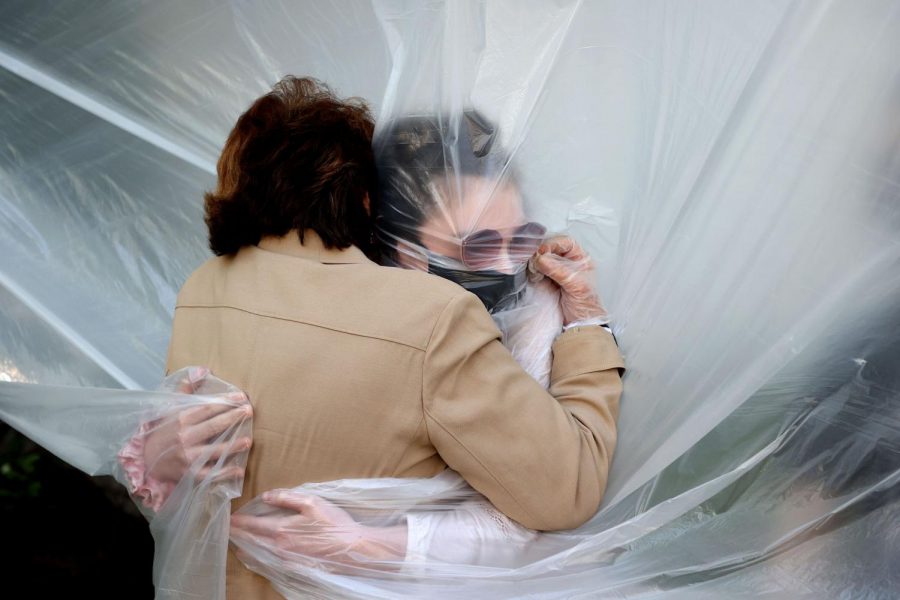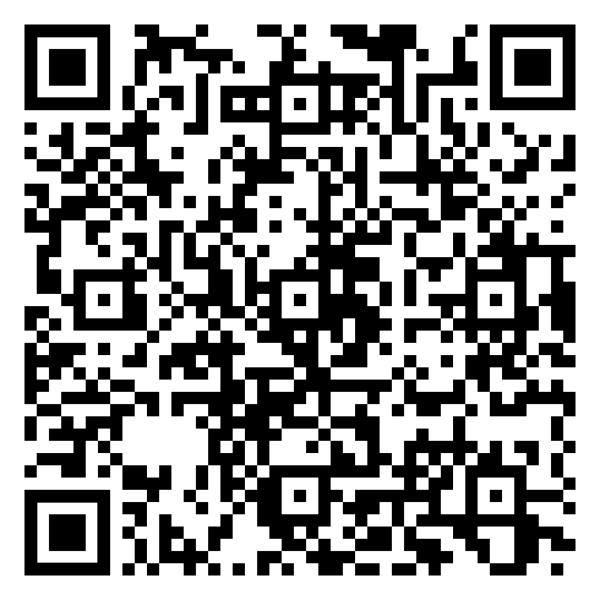The Zoom blues
Two people embrace in the only way two people can during a pandemic: through a plastic sheet and wearing face masks.
It has been a year since students first had to leave campus due to the pandemic, and during this past academic year, many classes have continued to be remotely delivered. For many students and faculty, it has been difficult adjusting to this new, Zoom-based learning environment.
“My main frustration is that my field of study, performing arts, does not lend itself to not being in-person. Many of the classroom tools and activities my classes would be using simply do not translate to Zoom,” said Timothy Pinckney, a fifth-year music composition and performing arts major.
Throughout this last year, with most classes being made remote, students have had to sit in front of a screen to learn, which can be a difficult task for some.
“I barely can learn anything this way. I need to be taught with an actual person present,” Finn Watson, a junior studio art major, said.
Sophomore biology major Katelynn O’Neill shared this sentiment, saying, “I perform worse in this learning environment. I already figured out in high school that online classes didn’t work for me.”
For many students, focusing over Zoom can be difficult and lead to frustration or feeling overwhelmed. This new focus on remote learning, while understandable, has caused a strain on some students’ mental health.
“I’m so mentally drained from Zoom. I feel overwhelmed seeing my own face on the screen, and spending so much time with technology is draining,” Kayla Ball, a junior psychology major, said.
“It definitely has been a struggle this past year to prioritize my mental health amidst all of the chaos, and I often find myself feeling emotionally drained and experiencing high levels of anxiety,” said Megan Roberts, a senior in childhood education.
Ball added, “I actually enjoy online classes, but being on Zoom gives me major headaches because I have all my classes on Zoom, and my work is on Zoom, so the technology usage has been affecting my mental and physical health.”
It is not only the students who have struggled to adjust to remote learning, as this was a new environment for some professors as well.
“One challenge I have noticed is that I didn’t realize how much I relied on whole-class and small-group in-person discussion as assessment of my students’ learning,” Department Chair for Education Hannah Miller said. “I used what I heard in class to gauge their understanding of our course content and to make decisions about teaching going forward. I have found the biggest challenge in remote environments to be creating new assessment measures that provide me with genuine and informative feedback about my students’ progress towards my learning objectives.”
For some of the professors on campus, this has seemed to be an enriching learning experience – being able to adjust to a new learning style and grow as an educator.
“I am experimenting and discovering new [to me] teaching techniques because of the switch to online classes,” Associate Professor of Fine Arts Sean Clute said. “As a result, I am able to dedicate more time connecting with students one-on-one. I am also able to support collaborative student endeavors in innovative ways. I look forward to seeing what types of remote teaching techniques I can bring back to a physical classroom.”
Miller agrees with this attitude, saying, “I have had to drop a lot of activities and learning experiences that relied on physical proximity to others, and have had to change them to identify digital tools that create collaborative opportunities for students.
“Most of my classes have been entirely redesigned. I have learned a lot through this process, and despite the time it took to redesign everything, I think that I will be a better teacher as a result of the changes.”
With the drastic change in how class is conducted, both students and professors have learned to adapt to learning over Zoom. It has been a difficult road, but for some, it has been a rewarding experience.
“I truly think all of my professors have done an amazing job given the circumstances,” Roberts said.
For Miller, she has learned valuable lessons regarding her teaching style. “Although this year has brought stressors I am looking forward to leaving behind, this year has also taught me some things I hope to take with me. One of these is the new ideas about flexibility in my course policies in terms of due dates and participation. As a result of COVID, I have learned about digital tools that can be used as alternatives to traditional writing assignments. Assessing writing is important in many contexts, but I didn’t realize prior to COVID how heavily I relied on formal writing as a means of assessment. I feel much more comfortable with using video, audio, and artistic and creative forms of expression to demonstrate mastery of learning objectives now.”
For professors and students alike, this forced immersion into remote learning has required considerable adaptation. “There’s been a steep learning curve for all of us,” said Professor of Writing and Literature Tyrone Shaw. “I’ve had to recalibrate the amount of work I could reasonably expect from my students, whether in a synchronous or asynchronous class. I’ve also had to revise many of my assignments to better fit this modality. Many of my students have been struggling with multiple issues beyond what I would usually encounter and understandably so. I have tried, for example, to be as flexible as possible regarding deadlines, and for the most part that has worked out well for them and for me. And, yes, it’s also more tiring than teaching on site. I’m still not sure why, but it’s undeniably so. Although I’m rarely on campus these days, I find can offer far more access for students than has been the case in the past. One-on-one conferences seem so much easier via Zoom, and I’ve enjoyed that immensely. Whether my students feel the same way…I think you’d have to ask them.”




